Chinese pastries are a delightful fusion of flavors and textures, ranging from flaky and savory to sweet and indulgent. With a rich culinary heritage spanning centuries, Chinese pastries encompass a diverse array of treats, including mooncakes, egg tarts, and pineapple buns. These delectable delicacies are often enjoyed during festive celebrations, family gatherings, or as a simple pleasure with tea. Dive into the world of Chinese pastries and experience the harmony of tradition and innovation in every bite.
Mooncake
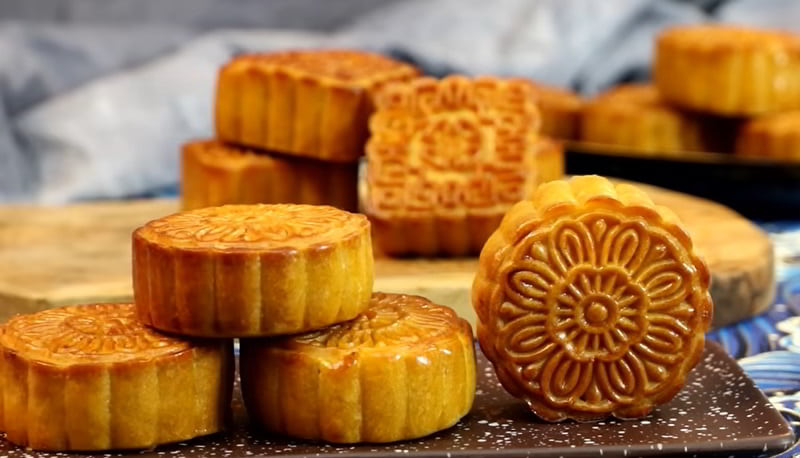
A mooncake, a beloved Chinese bakery treat, holds significant cultural importance during the Mid-Autumn Festival, symbolizing unity and harvest celebrations. Traditionally enjoyed in small wedges accompanied by tea, mooncakes are shared among friends and family during festive gatherings.
As one of the four major Chinese festivals, the Mid-Autumn Festival sees the exchange of mooncakes as customary gifts between business associates and loved ones, fostering a market for premium varieties. The festival's legend, steeped in moon watching and folklore, adds to the allure of these delectable pastries.
Beyond China, mooncakes have found their way into other Asian communities and Western countries, where they are celebrated as delicacies. Whether enjoyed for their rich symbolism or their delicious flavors, mooncakes continue to be cherished treats that bring people together to celebrate the beauty of the harvest and the joy of togetherness during the Mid-Autumn Festival.
Sachima
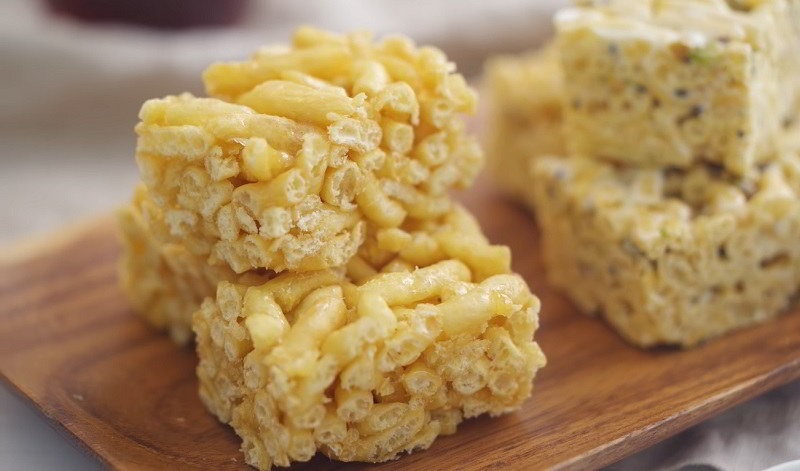
Sachima, a beloved sweet treat in Chinese cuisine, traces its origins to Manchuria and has become a popular snack across China. This delightful confection features fluffy strands of fried batter delicately bound together with a stiff sugar syrup, resulting in a chewy and satisfying texture.
While the basic recipe remains consistent, sachima exhibits regional variations in decoration and flavor, reflecting the diverse culinary traditions across China. Despite these regional nuances, all versions share a similar appearance, reminiscent of the beloved American Rice Krispies Treats.
Sachima's enduring popularity stems from its delightful combination of textures and flavors, making it a favorite indulgence for people of all ages. Whether enjoyed as a sweet snack on its own or paired with tea or coffee, sachima continues to captivate taste buds and evoke fond memories of culinary heritage and tradition in Chinese cuisine.
Osmanthus Cake
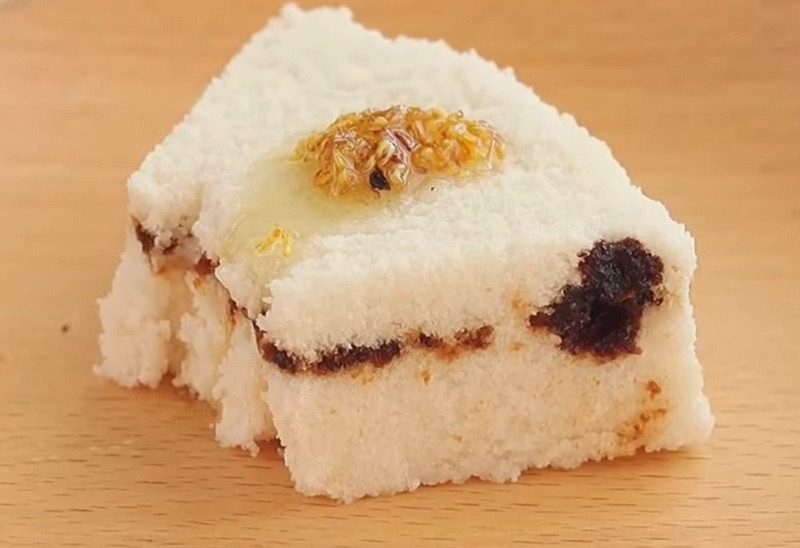
Osmanthus cake is a cherished delicacy in Chinese cuisine, crafted from a blend of glutinous rice flour, honey, fragrant osmanthus flowers, and rock sugar. This traditional pastry delights the senses with its crystal-clear appearance, sweet aroma, and soft, waxy texture.
Prepared with meticulous care and attention to detail, osmanthus cake embodies the essence of Chinese culinary tradition, offering a harmonious balance of flavors and textures. The sweet-scented osmanthus flowers lend a delightful fragrance to the cake, enhancing its overall appeal.
Osmanthus cake holds a special place in Chinese culinary culture, often enjoyed during festive occasions or as a cherished treat during leisurely moments. Its unique combination of ingredients and delicate preparation make it a beloved symbol of culinary craftsmanship and tradition in Chinese cuisine. Whether savored as a standalone indulgence or paired with a cup of tea, osmanthus cake is sure to captivate the palate and evoke a sense of nostalgia for those familiar with its exquisite taste.
Fa Gao
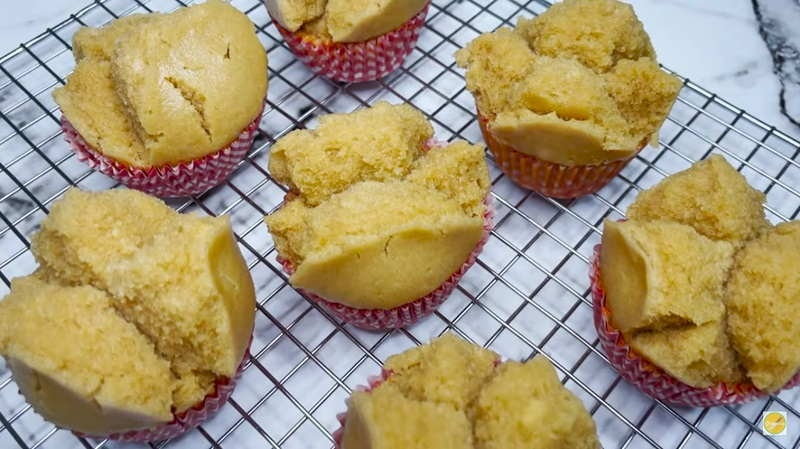
Fa gao, also known as prosperity cake or fortune cake, is a beloved Chinese pastry with a cupcake-like texture, steamed to perfection. Named for its characteristic split top that resembles a smiling face or blooming flowers, this delicacy is a symbol of good fortune and abundance. Traditionally enjoyed during the Chinese New Year, fa gao holds a special place in festive celebrations. However, it is also served at weddings, funerals, and other significant events, especially among the Hakka people.
Made with simple ingredients like flour, sugar, and leavening agents, fa gao is prized for its light and fluffy consistency, as well as its slightly sweet flavor. The steaming process imbues it with a soft, moist texture that is irresistible to enthusiasts of Chinese cuisine. Whether savored as a auspicious treat during joyful gatherings or enjoyed as a comforting snack, fa gao is a cherished symbol of prosperity and happiness in Chinese culinary culture, bringing joy to all who indulge in its delightful taste.
Chinese Almond Biscuit
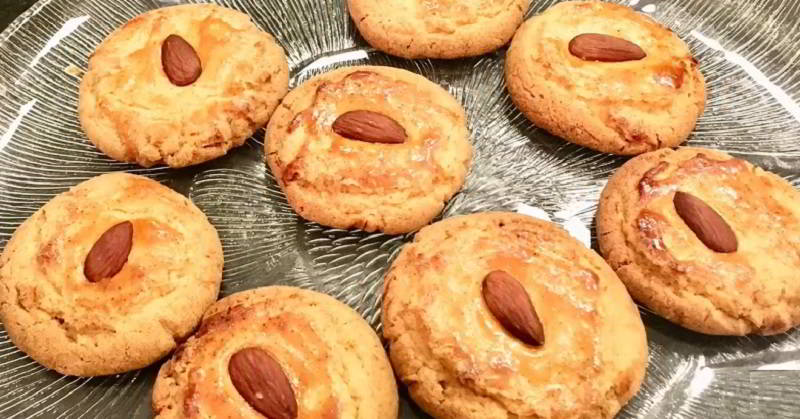
The Chinese almond cookie holds a special place in Chinese pastry, with a rich history originating in Guangdong, Macau, and Hong Kong, and a widespread presence in Chinese bakeries worldwide. Originally shaped like almonds, these cookies were later infused with actual almonds, becoming a beloved classic.
Now typically seen in round form, these petite cookies have solidified their status as a must-have in Chinese dessert offerings. Known for their crumbly texture and lack of filling, the essence of the Chinese almond cookie remains deeply rooted in the culinary traditions of southern China.
Appreciated for its simplicity, this cookie strikes a perfect balance of sweetness and texture, making it a delightful treat on its own or alongside a cup of tea. Its popularity in Chinese bakeries across the globe highlights its enduring appeal and cultural importance in the realm of Chinese sweets.
Chinese Flaky Pastry
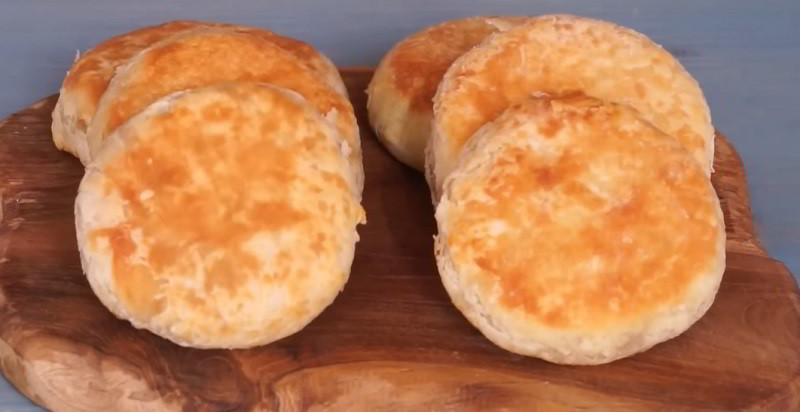
Chinese flaky pastry, also known as subing, is a versatile form of unleavened pastry used in traditional Chinese desserts and pastries. There are two main variations: Huaiyang-style and Cantonese-style pastry. Huaiyang-style pastry is renowned for its delicate and flaky texture, making it perfect for creating intricate delicacies such as Shanghainese "crab shell" pastries. These pastries are filled with savory or sweet fillings and are often shaped to resemble the shell of a crab.
On the other hand, Cantonese-style pastry boasts a slightly different texture and is commonly used to make desserts like sweetheart cakes. These cakes feature a flaky exterior and are filled with sweet bean paste or lotus seed paste, offering a delightful combination of textures and flavors.
Both variations of Chinese flaky pastry are prized for their crispy, layered texture and ability to hold a wide range of fillings, from savory to sweet. Whether enjoyed as a snack or served as part of a celebratory meal, Chinese flaky pastry is a beloved component of traditional Chinese cuisine.
Curry Beef Turnover
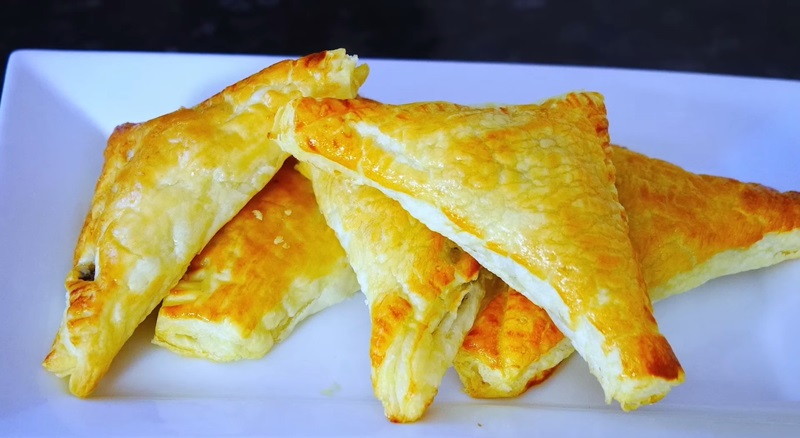
A curry beef turnover, also known as a curry puff, is a delectable Chinese pastry characterized by its distinctive half-moon crescent shape. Encased within its crispy and flaky outer shell is a savory filling of aromatic curry beef, creating a harmonious blend of flavors and textures.
This beloved pastry is a staple in Hong Kong and can be found in Chinese bakeries throughout the region. Its popularity stems from its irresistible combination of tender, flavorful beef enveloped in a crunchy pastry crust, making it a favorite snack or light meal option among locals and visitors alike.
Whether enjoyed as a quick bite on the go or savored as part of a leisurely meal, curry beef turnovers offer a delightful culinary experience that tantalizes the taste buds with each bite. With its rich aroma and satisfying taste, it's no wonder that curry puffs hold a special place in the hearts of pastry enthusiasts in Hong Kong and beyond.
Sou
-1709102322.jpg)
Sou is a delightful Chinese pastry renowned for its distinctive flaky texture and delicate flavor. Made using Chinese flaky pastry, this dried pastry is a beloved staple in various Chinese cuisines, where it adds a delightful crunch and subtle sweetness to a range of dishes.
Typically enjoyed as a snack or dessert, sou is cherished for its light and airy consistency, which is achieved through meticulous layering and baking techniques. The result is a pastry that boasts a satisfying crunch with every bite, along with a hint of sweetness that lingers on the palate.
In Chinese culinary traditions, sou is celebrated for its versatility, and it can be enjoyed in various forms. Whether served alongside a cup of tea as a midday treat or incorporated into more elaborate desserts, sou adds a touch of elegance and sophistication to any dining experience.
With its delicate layers and irresistible texture, sou continues to captivate the hearts and palates of food enthusiasts both in China and around the world, offering a delicious taste of Chinese culinary craftsmanship.
Chasan
-1713421936.jpg)
Chasan stands as a beloved emblem of Jiangsu Province's culinary heritage, particularly revered in the historic city of Huai'an, where it claims its origins. This traditional Chinese pastry boasts a golden-brown hue and a tantalizingly crispy texture, enticing palates with each delicate bite.
Crafted from meticulously rolled wirelike strips, chasan comes to life in an array of charming shapes, evoking images of combs, chrysanthemums, and pagodas. These intricate designs not only showcase the pastry's artistry but also add to its allure as a culinary treasure.
Whether enjoyed as a delightful snack or presented as a symbol of hospitality, chasan captivates with its irresistible crunch and rich flavor. As it continues to grace tables and delight taste buds across Jiangsu and beyond, chasan remains a cherished culinary tradition, celebrating the craftsmanship and ingenuity of Chinese pastry-making.
Yueguangbing
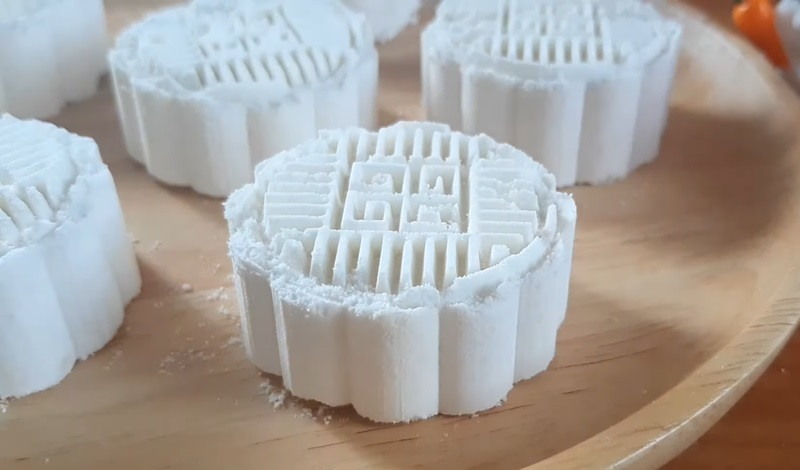
Yueguangbing, a cherished tradition with Hakka roots, epitomizes the essence of the Mid-Autumn Festival. This traditional mooncake, distinctive in its appearance, takes the form of a white, flat disc adorned with intricate carvings and paintings of flowers and animals on its surface.
Originally crafted as offerings to the moon during the Mid-Autumn Festival, Yueguangbing carries profound cultural significance for the Hakka community. Its delicate design and symbolic motifs symbolize reverence for nature and the celestial realm.
Beyond its ceremonial role, Yueguangbing holds a special place in the hearts of the Hakka diaspora and individuals of Chinese or Hakka heritage worldwide. From Southeast Asia to Africa, in countries like Mauritius, this beloved mooncake continues to be savored and shared, serving as a nostalgic link to ancestral traditions and a reminder of the enduring bonds of culture and heritage.
As it graces festive tables and gatherings, Yueguangbing remains a cherished emblem of tradition and community, uniting generations in celebration and reverence for the Mid-Autumn Festival.
Et
-1709809614.jpg)
Et, a cherished traditional pastry hailing from the western regions of Guangdong province, China, embodies the spirit of joy and celebration. This delectable treat holds a special place in festive gatherings, including the Spring Festival (Chinese New Year), Spirit Festival, and Winter Solstice, where it is lovingly shared among relatives and friends.
With its rich cultural significance, et pastry plays a central role in various ceremonial occasions, including wedding celebrations, birthday feasts, and housewarming parties. Its presence signifies abundance, happiness, and the strengthening of familial bonds.
Crafted with care and passed down through generations, et pastry represents a time-honored tradition that brings people together in moments of merriment and togetherness. As it graces the tables of gatherings and festivities, et pastry serves as a symbol of unity, prosperity, and the enduring spirit of Chinese heritage.
Masan

Masen is a traditional Tibetan pastry crafted with a blend of wholesome ingredients, including tsampa, dry cubic or curd cheese, yak butter, brown sugar, and water. This delectable treat holds a cherished place in Tibetan cuisine, celebrated for its rich flavor and nourishing properties.
The key ingredients, such as tsampa and yak butter, reflect the culinary heritage of the Tibetan plateau, where dairy products and hearty grains are integral to the local diet. Combined with the subtle sweetness of brown sugar, masen offers a satisfying balance of flavors that evoke the rugged landscapes and cultural traditions of Tibet.
Prepared with care and attention to detail, masen showcases the craftsmanship and culinary expertise of Tibetan cooks, who have passed down their recipes through generations. Whether enjoyed as a snack or served alongside butter tea, masen embodies the warmth and hospitality of Tibetan culture, inviting all who taste it to savor a moment of culinary delight.




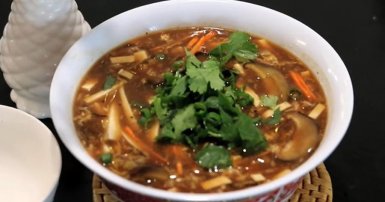
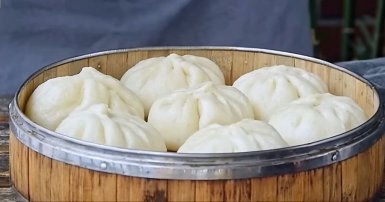
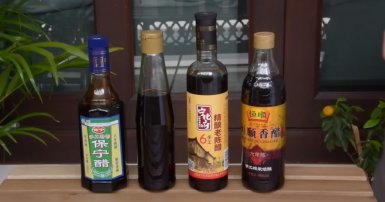
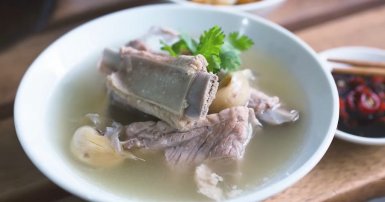
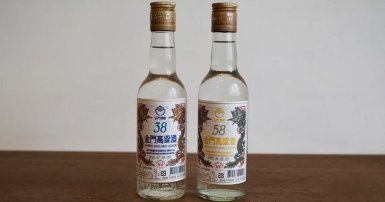
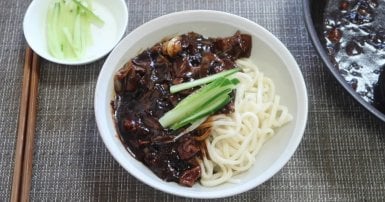
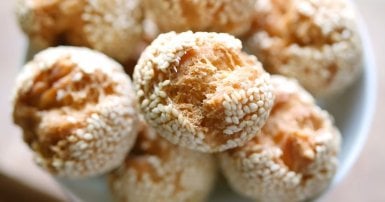
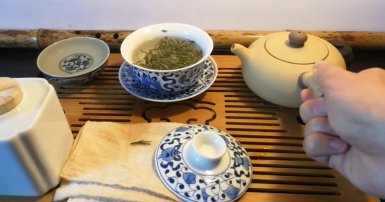

-1709813013.jpg)


